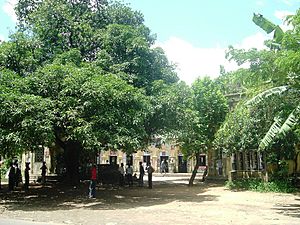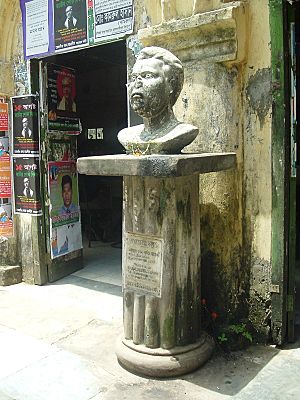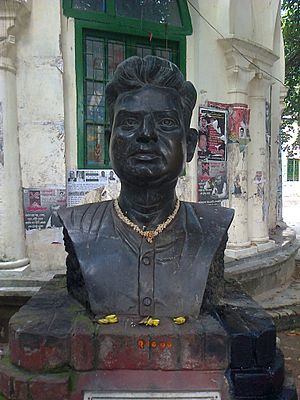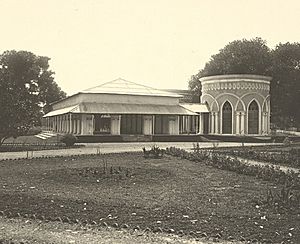Madhur Canteen facts for kids
Quick facts for kids Madhur Canteen |
|
|---|---|
|
মধুর রেস্তোরা
|
|
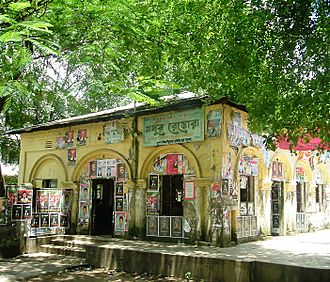 |
|
| General information | |
| Location | Dhaka University |
| Town or city | Dhaka |
| Country | Bangladesh |
| Coordinates | 23°43′54″N 90°23′33″E / 23.731547°N 90.392497°E |
| Groundbreaking | 1873 |
| Renovation cost | free |
| Client | students |
| Landlord | DU |
|
Invalid designation
|
|
Madhur Canteen (Bengali: মধুর রেস্তোরা, romanized: Modhur restora, lit. 'Madhu's canteen') is a very important place at the Dhaka University. It is famous in the history of Bangladesh because many big student movements started there. The building where the canteen is now also has a lot of historical value.
Madhusudan Dey, also known as Modhu, was the person who started this canteen. He is a very important figure in the history of the area. Sadly, he was killed on March 25, 1971, when the Bangladesh Liberation War began. During an attack called Operation Searchlight, the Pakistan Army attacked the Dhaka University. Madhusudan Dey was taken by the soldiers to Jagannath Hall and killed there, along with many university students. After the war, his son, Arun Kumar Dey, took over the canteen. Even today, Madhur Canteen is a special landmark and a popular meeting spot for students.
Contents
History of Madhur Canteen
How the Canteen Started
Madhur Canteen began in 1921. Madhusudan Dey (Modhu) was only 15 years old when he came to Dhaka with his father, Aditya Chandra. Aditya Chandra got permission from the university to sell food on the Dhaka University Campus. At that time, the campus was located in what is now the Dhaka Medical College building. Later, when the Arts Faculty moved to a new building in Nilkhet, the canteen moved there too.
A Hub for Student Movements
Madhur Canteen played a huge role in the fight for Bangladesh's freedom. It was a central place where many important political movements began. The canteen was very important during the Language Movements of 1948 and 1952. It also played a part in the movement of Dhaka University employees in 1949. Students also gathered there to protest against unfair university rules. In 1969, a big uprising happened in East Pakistan, and Madhur Canteen was a key meeting point for student leaders and activists. Because of its importance, the Pakistani army targeted Madhur Canteen on March 25, 1971, when Operation Searchlight began.
The 1971 Attack
Madhusudan Dey was killed on March 26, 1971. The Pakistani military attacked his home early in the morning. His wife, son, and daughter-in-law were also killed. Madhusudan Dey was arrested and taken to the Jagannath Hall playground. There, he was killed along with many students.
Where Madhur Canteen Is Now
Madhur Canteen was rebuilt after it was badly damaged during the war. It moved from its first spot to an older building. This building used to be the Durbar Hall for the Dhaka Nawabs. It was a place for meetings and even a skating rink and ballroom for the Nawabs to enjoy. Building this structure started in 1873 and took several years to finish. In 1906, an important meeting was held here. It was sponsored by Nawab Khwaja Salimullah, who was the Nawab of Dhaka. This meeting led to the creation of the All-India Muslim League.
In 1995, a student named Toufiq Hosen Khan created a statue of Madhusudan Dey. This statue stands in front of Madhur Canteen today.


